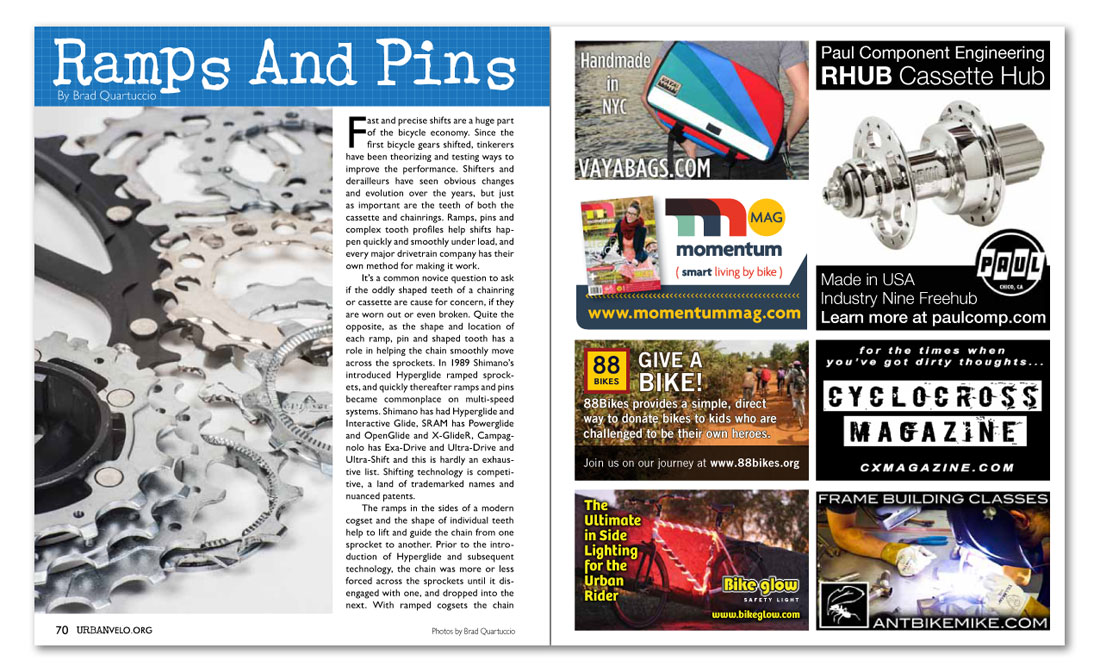


Ramps And Pins
Brad Quartuccio
Fast and precise shifts are a huge part of the bicycle economy. Since the first bicycle gears shifted, tinkerers have been theorizing and testing ways to improve the performance. Shifters and derailleurs have seen obvious changes and evolution over the years, but just as important are the teeth of both the cassette and chainrings. Ramps, pins and complex tooth profiles help shifts happen quickly and smoothly under load, and every major drivetrain company has their own method for making it work.
It’s a common novice question to ask if the oddly shaped teeth of a chainring or cassette are cause for concern, if they are worn out or even broken. Quite the opposite, as the shape and location of each ramp, pin and shaped tooth has a role in helping the chain smoothly move across the sprockets. In 1989 Shimano’s introduced Hyperglide ramped sprockets, and quickly thereafter ramps and pins became commonplace on multi-speed systems. Shimano has had Hyperglide and Interactive Glide, SRAM has Powerglide and OpenGlide and X-GlideR, Campagnolo has Exa-Drive and Ultra-Drive and Ultra-Shift and this is hardly an exhaustive list. Shifting technology is competitive, a land of trademarked names and nuanced patents.
The ramps in the sides of a modern cogset and the shape of individual teeth help to lift and guide the chain from one sprocket to another. Prior to the introduction of Hyperglide and subsequent technology, the chain was more or less forced across the sprockets until it disengaged with one, and dropped into the next. With ramped cogsets the chain
Paul
Ant Bike Mike
Momentum
Vaya
88Bikes
Cyclocross Magazine
Bike Glow